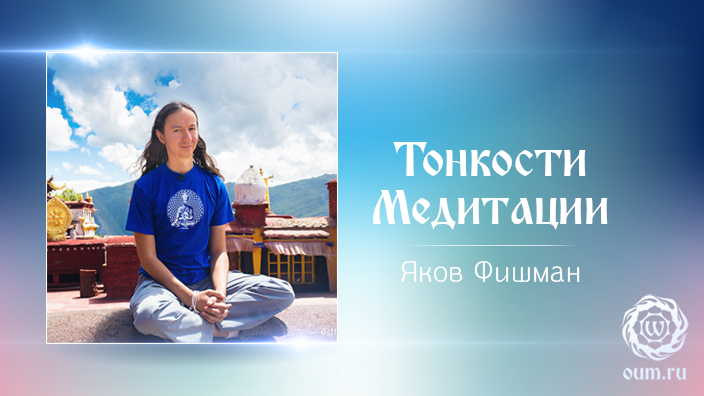WITH the arrival of the practice of concentration (meditation) in the Western world, scientific interest in it steadily increased. There have been many studies that prove that meditation can be considered an effective tool for improving overall well-being. Practice improves cognitive processes such as managing attention during tasks that require increased concentration. However, the connection between meditation and creativity is less clear. There is still no visual model to explain how creative processes take place in the brain and how different types of concentration practices affect them. To investigate this issue, scientists from the Netherlands investigated the effect of one-pointed attention (OB) and open presence (OP) meditations on creative tasks using convergent and divergent thinking.
Convergent thinking is linear thinking, which is based on the step-by-step implementation of tasks, following algorithms. Divergent thinking is creative thinking; the term comes from the Latin word “divergere”, which means “to diverge.” This method of solving problems can be called fan-shaped: there is no clear connection when analyzing causes and effects. Divergent thinking cannot be measured with classical methods, since it is based on random ideas. That is why, for example, people with a genius mindset may not respond well to IQ tests, which are built according to the classical convergent scheme.
Meditations of one-pointed attention and open presence are the main techniques of Buddhist meditation practices. In the first case, the focus is directed to a specific object or thought, and everything else that can attract attention (bodily sensations, noise, or obsessive thoughts) should be ignored, constantly redirecting concentration to the same focus point. In contrast, during open presence meditation, the practitioner is open to perceiving and observing any sensations or thoughts without focusing on a specific object, therefore, attention is not limited by anything.
Let’s go back to the study. In problem solving, scientists evaluated divergent and convergent thinking. For example, divergent thinking in the creative process allows new ideas to be generated in a context that suggests one or more correct decisions, such as brainstorming. Conversely, convergent thinking is considered the process of generating one possible solution to a specific problem. It is fast and relies on precision and logic. Based on the results of observations, the Dutch scientists came to the conclusion that the performance of various types of attention varies depending on the experimental conditions. This result supports the hypothesis that convergent and divergent thinking are different components of a single creative thinking.
Applying this theory to the practice of meditation, one would expect that certain types of it – unidirectional attention (OB) and open presence (OP) – can have different effects on some aspects of cognitive control. OP meditation assumes a rather weak control of the practitioner over his thoughts, allowing him to freely move from one to the other. In contrast, OB meditation requires strong concentration and limitation of the flow of thoughts.
Based on this, the Dutch researchers suggested that the practice of OP meditation should make it easier to perform tasks that require more focused control (convergent thinking), and the practice of OP meditation should have a beneficial effect on divergent thinking.
The study involved 19 participants (13 women and 6 men) aged 30 to 56 years, practicing meditation OP and OB for an average of 2.2 years. After the meditation sessions and visualization exercises, practitioners were required to complete tasks to assess the level of divergent and convergent thinking.
Shamatha (samatha), a type of Buddhist practice that aims to achieve mental peace by focusing on a specific object, was used as an OB meditation. In this case, the participants focused on breathing and on different parts of the body (during inhalation and exhalation, attention was directed to a specific area). The goal of the practice was to maintain focus throughout the session.
The OP meditation used an adapted version of transformational breathing developed by Dr. Judith Kravitz in 1980. Breathing was used as a means to free the mind so that any thoughts, sensations and emotions could arise freely. The mentor encouraged practitioners to be open to any experience and observe their thoughts and emotions.
Participants were asked to present certain household activities, such as cooking, receiving guests. To prevent focusing on a single point or concept, attention periodically switched between visualizing the action itself and thinking about it. For example, using the instruction: “Think about who you would like to invite.”
The problem of the distant associations of Sarnoff and Martha Mednik (convergent thinking)
In this task, participants were asked three unrelated words (eg, time, hair, and stretch) in order to find a common association (length, duration). The Dutch version consisted of 30 items, that is, in three sessions the participants completed 10 different tasks.
Joey Paul Guildford’s Alternative Use Problem (Divergent Thinking)
Here, participants were asked to list as many uses as possible for six household items (brick, shoe, newspaper, pen, towel, bottle). In each of the three sessions, the participants performed two different tasks.
It has been suggested that open presence meditation promotes a state of cognitive control, which is characterized by a weak focus of attention on certain thoughts, while meditation of one-pointed attention, on the contrary, promotes a focused state. And according to the results of the study, the scientists concluded that the practice of meditation OP promotes divergent (creative) thinking, that is, solving problems through the search for alternative options.
The second prediction was that the practice of OB meditation should promote convergent (linear) thinking. At the same time, scientists noticed an unexpected effect: when assessing the emotional state of the participants, it was noticed that any practice of meditation significantly improved the mood. Given that elevated mood contributes to defocusing of attention, it is possible that meditation practice affects convergent thinking in two opposite ways: the focusing nature of meditation may have a positive effect on linear thinking, while the relaxing aspect of this practice may interfere with this. At the moment, this is still an assumption that requires further research.
In any case, meditation has been shown to have some positive effect on creative thinking. It is important to note that the benefits of OP meditation go beyond simple relaxation. Apparently, the practice of meditation OP restructures cognitive processing in general and affects performance when performing other, logically unrelated tasks. Dutch researchers suggest that this practice leads to a wider range of mental resource allocation. Thanks to this, the practitioner develops a state of cognitive control, when he is able to focus not only on a specific object in the process of completing tasks. This greatly facilitates the transition from one thought to another, as required by divergent thinking. This consideration is consistent with the observations of other scholars that OP meditation results in better performance of the distributed attention task and reinforces the notion that the practice of meditation in the long term can have a positive impact on cognitive processes.
Lorenza S. Colzato, Aika Ozturk and Bernhard Hommel
Institute for Psychological Research and Leiden Institute for Brain and Cognition, Leiden University, Leiden, The Netherlands
Source: frontiersin.org/articles/10.3389/fpsyg.2012.00116/full








